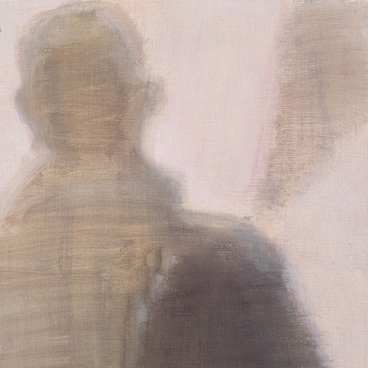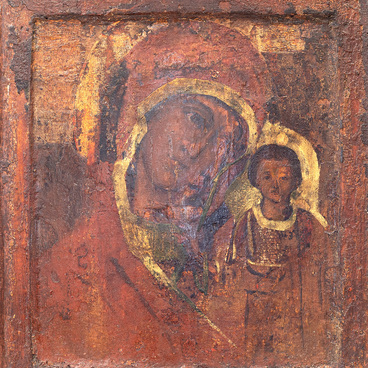The icon of the “Resurrection of Christ with Feasts” is one of the key works of Old Russian art in the museum’s collection. The icon entered the museum from Saint Nicholas Church in the village of Kovda, Murmansk region. After the church was closed in 1960, the icons were sent to various storage centers. In 1994, 52 restored works entered the Murmansk Regional Art Museum. The museum specialists were the ones who identified the iconography, sources of origin and the periods when the icons were created.
The Kovda church is a building of the so-called “klet” type with a two-tier gable roof and traditional, archaic design. The church walls are cut from pine logs in the “oblo” technique — a way of cutting the corners of a building in such a way that the logs do not extend beyond the plane of the wall. The log cabins of the temple part and the altar have the so-called “povaly”, that is, the crowns in the upper part are turned down and widened. The church consists of four parts: the nartex, the refectory, the temple, and the altar. It has one dome of a bizarre form with a cylindrical neck that is put on the ridge, and a cross.
The church is dedicated to a saint that is especially revered in the Kola North — Saint Nicholas the Wonderworker, Archbishop of Myra, Lycia — the patron saint of sailors, hunters, and fishermen. Those in distress always resorted to Saint Nicholas praying for help. There was a church and a chapel dedicated to Nicholas the Wonderworker in almost every Pomor village.
In the 19th century, the building of Saint Nicholas Church was partially renovated: in 1815 and 1889, the walls were redone on the outside. In the early 2000s, the monument of wooden architecture of federal significance — Saint Nicholas Church in the village of Kovda — underwent restoration.
The icon of the “Resurrection of Christ with Feasts” is dedicated to the most important Christian holiday — the Easter. In the lower part of the centerpiece Christ is depicted trampling the broken gates of Hell (on the left are the broken keys and locks) and leading the progenitors Adam and Eve out of the tombs. They are joined by the Old Testament kings, prophets and the righteous. Traditionally, the border scenes in icons are to be read clockwise, starting from the upper left corner. In this icon, each scene has an inscription in the margins.
The Kovda church is a building of the so-called “klet” type with a two-tier gable roof and traditional, archaic design. The church walls are cut from pine logs in the “oblo” technique — a way of cutting the corners of a building in such a way that the logs do not extend beyond the plane of the wall. The log cabins of the temple part and the altar have the so-called “povaly”, that is, the crowns in the upper part are turned down and widened. The church consists of four parts: the nartex, the refectory, the temple, and the altar. It has one dome of a bizarre form with a cylindrical neck that is put on the ridge, and a cross.
The church is dedicated to a saint that is especially revered in the Kola North — Saint Nicholas the Wonderworker, Archbishop of Myra, Lycia — the patron saint of sailors, hunters, and fishermen. Those in distress always resorted to Saint Nicholas praying for help. There was a church and a chapel dedicated to Nicholas the Wonderworker in almost every Pomor village.
In the 19th century, the building of Saint Nicholas Church was partially renovated: in 1815 and 1889, the walls were redone on the outside. In the early 2000s, the monument of wooden architecture of federal significance — Saint Nicholas Church in the village of Kovda — underwent restoration.
The icon of the “Resurrection of Christ with Feasts” is dedicated to the most important Christian holiday — the Easter. In the lower part of the centerpiece Christ is depicted trampling the broken gates of Hell (on the left are the broken keys and locks) and leading the progenitors Adam and Eve out of the tombs. They are joined by the Old Testament kings, prophets and the righteous. Traditionally, the border scenes in icons are to be read clockwise, starting from the upper left corner. In this icon, each scene has an inscription in the margins.



